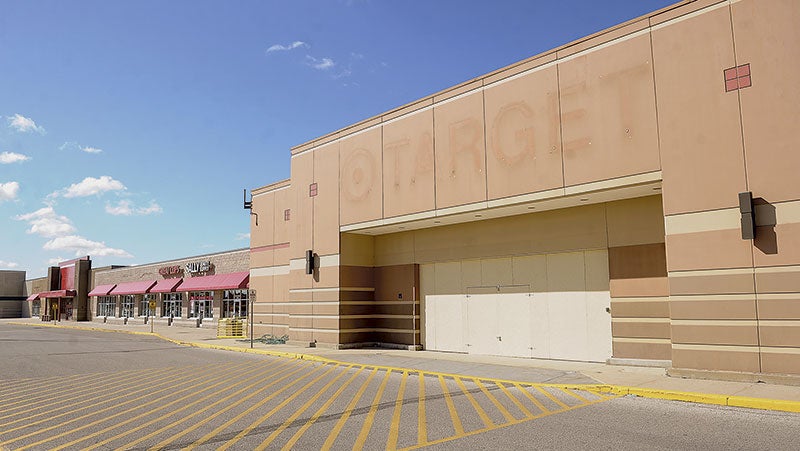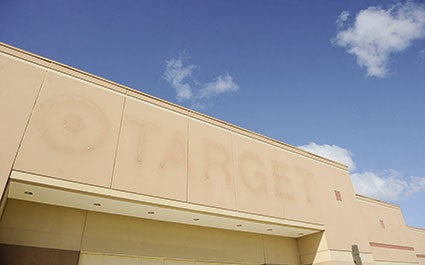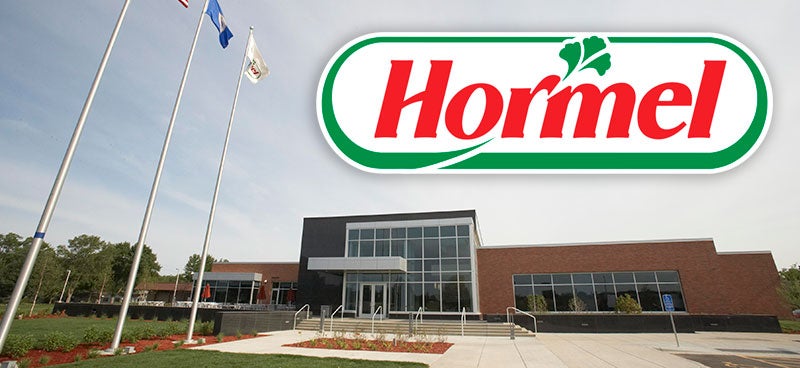Good jobs will boost retail, city leaders say
Published 12:13 pm Sunday, October 1, 2017

- Target isn’t the only store to leave the strip mall just off 18th Avenue Northwest. Several other stores including Staples and Radio Shack have also left in recent years among others. Eric Johnson/photodesk@austindailyherald.com
About this series: The Austin Daily Herald is examining the state of Austin’s retail sector and what can and is being done to improve it. Part 4 from the perspective of business owners will publish next Saturday.
Read part one here: Austin struggles as shoppers opt to travel; City competes with neighbors in a 40-mile radius for customers, retailers
Read part two here: Nurture niches in Austin, regional retail expert says; Retail strategy development tools include tapping incubators in other cities
Hy-Vee distribution center seen as a key to improving shopping sector
The recent announcement by Hy-Vee, Inc. of plans to build a distribution center in Austin has drawn praise from city leaders. The decision is seen as an opportunity to boost Austin’s job market by introducing good paying jobs to the area.
With good paying jobs comes a retail boost, as City Administrator Craig Clark can attest.
“Jobs necessitate someone having a home and a car and needing insurance and needing to buy groceries, so you build a retail base by incentivizing other commercial development,” he said.
When asked how they would describe the current state of Austin’s retail scene, city leaders gave a variety of answers.
“Underperforming,” said Austin Area Chamber of Commerce Executive Director Sandy Forstner. “The analysis that we’ve done over a decade shows that we have fewer sales in Austin than we should expect to see.”
“If I were to grade it, I would give it a C,” said Mayor Tom Stiehm. “There are needs we have in the community that aren’t being met.”
Clark, on the other hand, was a little more optimistic, citing recent developments on 18th Avenue Northwest.
“Eighteenth Avenue is our largest workhorse for retail,” he said. “With the redevelopment of Oak Park Mall and Hy-Vee taking over that property, it’s as strong as it’s ever been.”
‘We need more well-paying jobs’
City leaders generally agreed on the challenges Austin faces in revitalizing its retail scene.
One such challenge is the median household income.
“Having disposable income to buy more consumer goods is a primary factor for retail,” Clark said. “For people looking to grow retail, statistics like median household income are something they look at when deciding to locate in Austin or other communities.”
“We have a high poverty rate in town,” Stiehm said. “If you have a high poverty rate, people aren’t going to buy TVs and fancy cars and things like that. We’re really happy to have the new Hy-Vee, but when you start talking things like clothing and cars, a lot of people don’t have money to splurge on luxury items. We need more well-paying jobs.”
Retail market challenges
Online sales are another challenge to Austin’s retail scene, with the closing of Austin’s Target being the prime example, according to Forstner. When it shut its doors in 2015, Austin’s Target was the first one to close in Minnesota since 2003. It was one of 11 locations nationwide the Minneapolis-based company closed in 2015.
“It was one of their major stores and one of the first ones to close in Minnesota,” he said. “One of the reasons (retailers are) closing stores is because they are investing more in online sales.”
“The broader context of retail has an uncertain future with online sales,” Clark said. “It’s interesting how people want to go to a brick and mortar store and look at things and touch things, but then they go shop online. What happens if the brick and mortar store is no longer there?”
Another challenge leaders pointed to was housing.
“We’re really hurting for housing right now, and it’s getting worse,” Stiehm said. “I know a lot people who have sold their houses immediately. We don’t have as many people living here as we would like.”
“Retailers look at population numbers,” Clark said. “They want to know the number of people they’re going to have as prospective shoppers.”
The last significant challenge to Austin’s retail scene, according to city leaders, is location.
“Our retail trade area is smaller than other cities,” Forstner said. “Albert Lea is smaller than Austin, but they have a larger trade area. They have virtually no competition to the west and south and can draw people from a wider area. Here, we have Albert Lea, Owatonna and Rochester in our trade area.”
“I know we lose a lot to Home Depot (in Albert Lea),” Stiehm said. “People in Austin, they go to Home Depot for a lot of things. If we were farther away, it’d be better for our retail.”
While Clark believes location is a factor, he does not think it carries as much weight in affecting Austin retail.
“Roads go both ways between Albert Lea and Austin and Rochester and Owatonna,” he said. “Having Runnings in the community is an example. There are a lot of people that come into town to go to Runnings from Owatonna and Albert Lea. That’s not a one-way street. We benefit from that as much as we lose from that.”

Even after so much time has passed, the impact of Target’s leaving is still felt in the northwest retail district.
Eric Johnson/photodesk@austindailyherald.com
Dealing with retail leakage
With these challenges comes the major concern of retail “leakage,” or the loss of retail revenue to other cities.
“We get 60 cents on the dollar, which isn’t good,” Stiehm said. “Albert Lea gets better than that. Rochester gets more than its fair share because of the box stores. We’re losing a lot of tax dollars when we lose that much to the other cities.”
To prevent retail sales leakage, the Austin Area Chamber of Commerce launched the “Buy Mower, Grow Mower” campaign in 2008. At the time, Austin was losing half of expected sales, according to Forstner. The program, which had the goal to increase local purchases by $20 million, aimed to encourage people to spend their money in Mower County.
Since the launch of “Buy Mower, Grow Mower,” Austin’s retail leakage losses have decreased from 50 percent to 30 percent.
Retail leakage directly affects sales tax in Austin, particularly the local option sales tax.
“Our local option sales tax is dependent (on retail) and our commercial property tax is derived in part from retail establishments,” Clark said. “The money goes in the general fund and we portion it like other tax revenue.”
A month-to-month comparison of local option sales tax returns from 2016 versus 2015 showed decreases for seven months in 2016. The same held true in a comparison of returns in 2014 and 2015.
Community identifies needs, wants
But city leaders are not the only ones concerned. The loss of Target, as well as many stores in the same shopping complex, has citizens concerned. City leaders say citizens have been more than vocal in expressing their wants and needs.
“When we started Vision 2020, we had several community meetings and we asked people what Austin needs to enhance the quality of life,” Forstner said. “The number one request was Olive Garden, or an Italian restaurant, and Kohl’s and Menards.”
“We need to have a building supply store really bad,” Stiehm said. “When Walmart came to town, what we were told and what we expected was we would get a building supply store shortly thereafter. We were in negotiations with one, but that was when the recession started and the economy started tanking and they pulled out.
“Clothing stores are another need. Right now we’re trying to get some retail into the old Hy-Vee store. Originally, when we contacted people, our number one goal was to get Kohl’s in there. We haven’t given up on that, but right now Kohl’s isn’t expanding. If not Kohl’s, then another clothing store, like TJ Maxx, is what we’d like to get.”
Getting these stores to Austin, however, is a challenge unto itself, as Clark explained.
“As far as retail development, there are options available, but trying to identify those isn’t easy for (retailers),” he said. “We’re told the current Target is too big for some development and not big enough for others. Take a Fleet Farm, they’re well over 100,000 square feet and the former Target is not big enough. When we talk with a store like Menards, they tell us they collect zip code information at their current stores. If people are willing to drive to Rochester to the Menards there, it doesn’t make sense for them to have the capital costs and the wages for their employees at an Austin facility.”
Importance of ‘Grow Austin’
Despite the difficulties, city leaders are doing what they can to draw retail to the area. The building of a Hy-Vee distribution center is a critical step to attracting potential stores.
“Retail is an interesting component from an economic development standpoint,” Clark said. “Generically, what we’re looking at is an incentive package for general business development with the goal that the business development creates jobs.
“That’s what we’re interested in from a city perspective in economic development. It’s helping retail in an indirect way.”
Recently, the city announced its “Grow Austin” business incentive plan. The plan, which aims to support quality job growth and positively differentiate the community as a business-friendly location, came from a city partnership with Mower County, Austin Utilities and the Development Corporation of Austin.
“We really put a focus on what we call ‘quality paying jobs,’” Clark said. “We want to incentivize paying more in wages.”
In the meantime, Forstner encourages people to buy local via the “Buy Mower, Grow Mower” program.
“We don’t expect people to spend every last dime in Austin, but we certainly hope they give Austin retailers a first look and an equal opportunity in their sales,” he said.
18th Avenue is ‘the most important area’
Forstner believes that 18th Avenue Northwest will play the most crucial role in revitalizing Austin’s retail, especially since the opening of the new Hy-Vee store in May.
“The most important area in Austin is 18th Avenue,” he said. “That is where most of our retail dollars flow through.”
“We need more retail, and people need to support the businesses here so we can keep the ones we have,” he added.
Clark and Stiehm maintain a degree of optimism for Austin’s retail future.
“In the continuum where Austin fits in, as far as our demographics and population, you can look at a similar-sized community and see other retail options.” Clark said. “I think there are still opportunities for retail in Austin among broader challenges.”
“I think our Chamber does a good job,” Stiehm said. “I really think people want to buy in Austin. In a town like Austin, everybody knows everybody and if someone owns a business, people will try to shop there because they want to help their neighbors. The small town neighborly aspect is a strength.”





